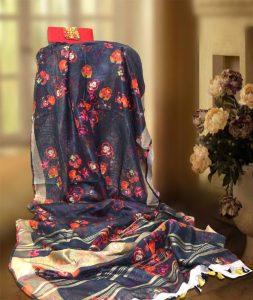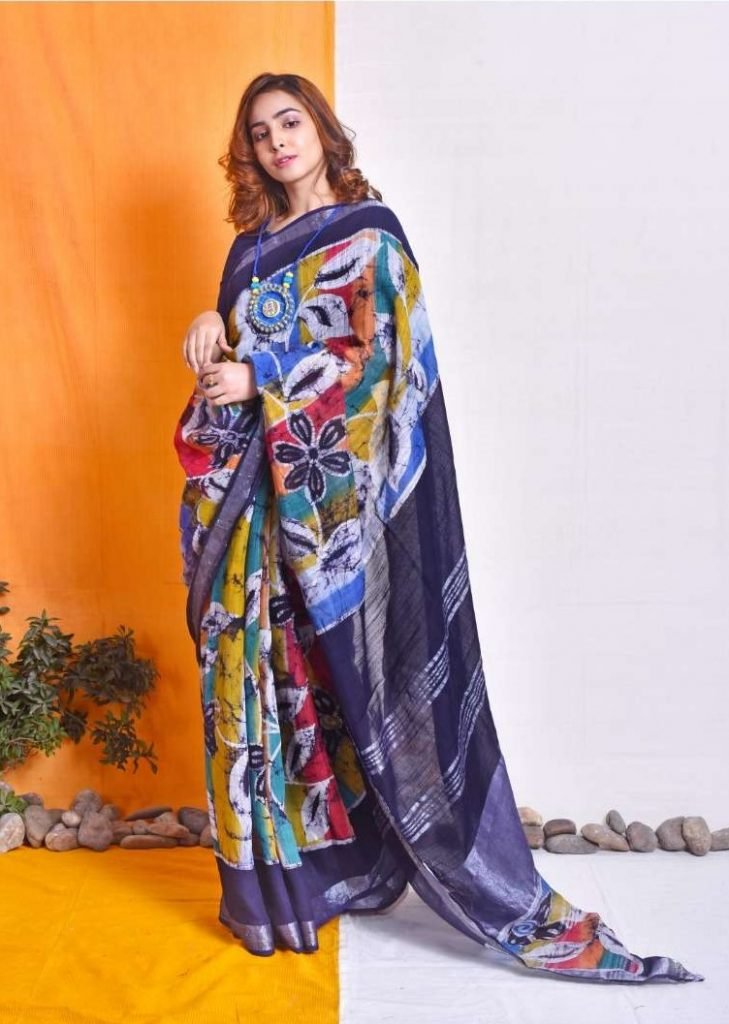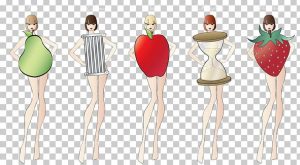What are Natural and synthetic fabrics?
Fabrics can be broadly classified into natural and synthetic fabrics depending upon the source of fibers. Natural fabrics like cotton, wool, linen, silk are made from fibers that are sourced from plants, vegetables, or animals whereas synthetic or man-made fabrics like polyester, nylon, spandex are produced using the composition of chemical substances.
What is Linen?
Linen is a natural fabric made from fibers of flax plants. Linen fabric is very strong and durable. It is highly absorbent and breathable. It dries very quickly thus help in reducing heat retention and making it suitable for hot and humid climates.
How is Linen made?
Flax plants are planted in the cooler part of the year and are ready for harvesting after 100 days. Flax plants can grow in poor soil and with less water consumption than cotton. They are harvested when the seeds are brown and stems turn yellow. After harvesting, they are processed using machines to separate leaves and seeds. Then stalks are broken into inner fibers and outer fibers. Inner fibers are then combed into thin strands for spinning. Flax fibers are then processed by spinning and reeling into yarns. The yarn is treated, dyed, and used for the manufacturing of textiles and other apparel products.
Higher quality linen is soft to touch whereas lower quality linen is rough and stiff.
Types of Linen fabrics
On basis of the weaving technique, linen can be classified into four types:
- Sheeting linen: This type of linen fabric has a higher thread count, close weave, and soft surface. Apparels are usually made from this type of linen.
- Plain woven: It is comparatively loosely woven and used for making dish towels and hand towels etc.
- Damask linen: It is woven on a jacquard loom and is decorative and delicate. It is used for making decorative items.
- Loosely woven: It is least durable with high absorbency. It is used to make reusable diapers.
Organic-Linen
Organic linen is a natural fiber derived from the flax plant. It is pesticide-free, pigment-free, and hypoallergenic. All the parts of plants are used, ensuring no wastage. The products are certified as organic by the Global Organic Textile Standard (GOTS), ensuring that flax used to make linen products is grown organically without any insecticides or pesticides. Also, ecologically and socially responsible methods were used during the production method i.e., no child labor, no harmful chemicals or dyes were utilized.
Linen Blends:
Linen can be blended with different fibers to accentuate the properties of the fiber.
Linen-cotton: The cotton blend helps in softening the hand/feel of linen and helps in reducing the wrinkles of fabric.
Linen-Rayon: Blending rayon with linen helps in adding drape and sheen to the fabric.
Linen-Polyester: Polyester helps in reducing the wrinkles and retain the brighter colors.
How to identify Linen Fabric?
- Linen is slightly thicker and stronger than cotton. The thread count of linen is between 80-150 which is naturally thicker than that of cotton which is around 200.
- Linen has longer fibers and the fabric looks more slubby.
- Linen feels cool to touch because of its moisture absorbing characteristics.
- If linen fabric is crushed with a hand and let go, it will get wrinkled and will rebound.
- Linen gets softer with repetitive washes however retains its body and weight.
- Linens are mostly white or off-whites and rarely dyed.
- The fabric gets crushed and wrinkled easily and is difficult to iron.
 Courtesy: Designer Gopa Gupta
Courtesy: Designer Gopa Gupta
Why is Linen becoming so popular in apparel?
- Linen is made from flax fibers which are 100% natural and are biodegradable.
- Linen is an environment-friendly and sustainable fabric.
- Linen is a lightweight and very comfortable fabric especially for summer and humid climates. It effectively absorbs perspiration, wicks away moisture from the body, and thus regulates the body temperature.
- The fabric softens with uses and washes and is extremely durable will a long shelf life. It is 30% stronger than cotton.
Because of all these factors, Linen is becoming part of the summer collection of many designers.
Fashion trends in Linen
Linen fabric is identified by its elegance, exclusivity, and simplicity. Beige, brown, and whites are the most popular shades in Linen apparel. Designers are also using olives and creams as a part of their collections. Along with this, other pastel shades, tropical prints as well as brighter colors are also coming into trend.
Linen garments are in vogue equally for women as well as for men’s clothing. Pure linen as well cotton-linen blend as mostly used for garments. Cotton helps in giving softness and retains the shape of the garments.
Very lightweight to lightweight fabric is used for garments like tops. Medium weight- medium/heavyweight fabrics are used for suits, jackets, and dresses. Linen jackets, skirts, linen pants, casual solid or printed shirts, tops with little value addition in terms of trims or embroidery look best in Linen.
 Courtesy: Designer Gopa Gupta
Courtesy: Designer Gopa Gupta
In trend styles:
- High neck crop tops can be paired with high waisted skirts or pants.
- Midi style dresses are also in trend.
- Linen blazers with jeans and a t-shirt.
- Linen suits for formal occasions.
- Linen jumpsuits for comfortable and breezy summers.
- Linen sarees look fabulous when paired with long length blouse with a side-slit, peplum style blouse, bell-sleeve blouse, or close neck blouse. Pair saree with contrast color blouse to accentuate the colors.
- For an unconventional look, co-ordinate Kalamkari printed linen sarees with plain linen blouse. Else, match a solid colored or monochrome color linen saree with a kalamkari printed linen/ cotton blouse.
- Other prints like ikat, checks, figure motifs also co-ordinate well with linen sarees. Solid cotton blouse with designer motif embroidered on sleeves, back or one side is also high on-trend.
- Linen/ Linen-cotton saree can be accessorized with hand-made statement jewelry. Statement neckpieces, cloth accessories, beaded jewelry add grace to the overall look.
Taking care of your Linen garments
The maintenance of linen fabric is easy and garments can be hand washed or gentle machine washed in lukewarm or cold water. Soft water and mild detergents are suggestive for washing to protect the fiber. Linen becomes softer and more absorbent after each wash.
As linen fabric wrinkles and crushes easily, they are a little difficult to iron however they are easier to iron when clothes are still damp.
Conclusion
Linen is one of the oldest textiles in the world and is very versatile. It can be used for upholstery, table cloths, window sheers, etc.
Due to its unique properties-summer-friendly, 100% natural, and sustainable fabric, it is increasingly becoming popular in the fashion industry as well.
FAQ
Linen is a natural fabric made from fibers of flax plants. Linen fabric is very strong and durable. It is highly absorbent and breathable. It dries very quickly thus help in reducing heat retention and making it suitable for hot and humid climates. Fabrics can be broadly classified into natural and synthetic fabrics…..
Linen is a natural fabric made from fibers of flax plants.
Organic linen is a natural fiber derived from the flax plant. It is pesticide-free, pigment-free, and hypoallergenic. All the parts of plants are used, ensuring no wastage. The products are certified as organic by the Global Organic Textile Standard (GOTS), ensuring that flax used to make linen products is grown organically without any insecticides or pesticides.
On basis of the weaving technique, linen can be classified into four types:
Sheeting linen: This type of linen fabric has a higher thread count, close weave, and soft surface. Apparels are usually made from this type of linen.
Plain woven: It is comparatively loosely woven and used for making dish towels and hand towels etc…Read more
Linen is slightly thicker and stronger than cotton. The thread count of linen is between 80-150 which is naturally thicker than that of cotton which is around 200.
Linen has longer fibers and the fabric looks more slubby.
Linen feels cool to touch because of its moisture absorbing characteristics.



 Courtesy: Designer Gopa Gupta
Courtesy: Designer Gopa Gupta Courtesy: Designer Gopa Gupta
Courtesy: Designer Gopa Gupta

